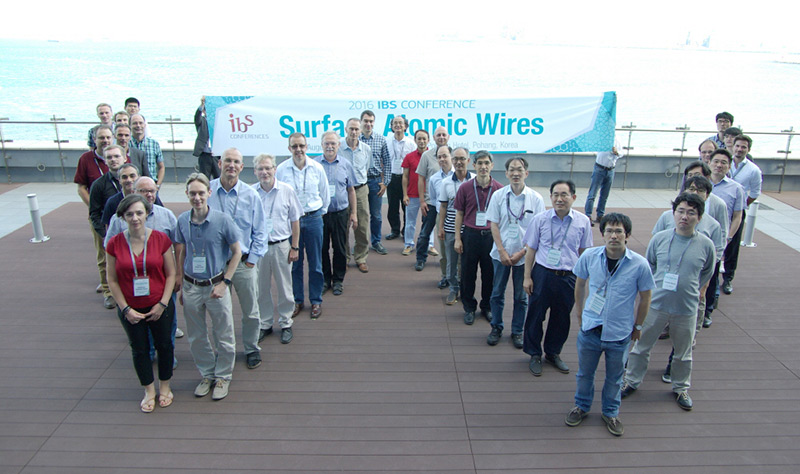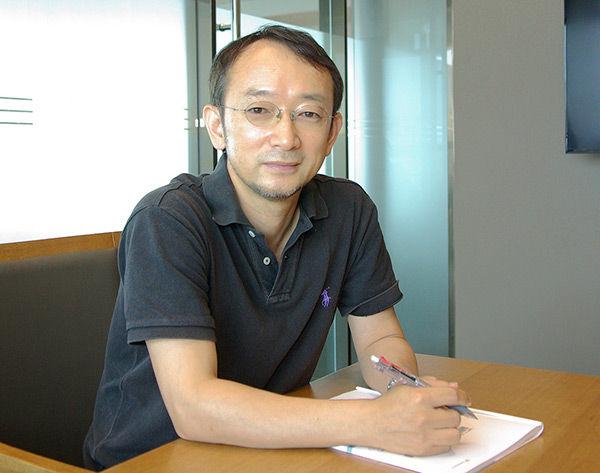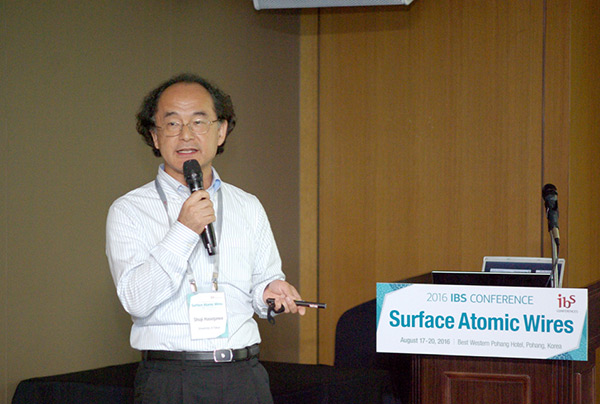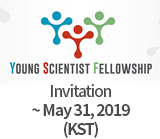주메뉴
- About IBS 연구원소개
-
Research Centers
연구단소개
- Research Outcomes
- Mathematics
- Physics
- Center for Underground Physics
- Center for Theoretical Physics of the Universe (Particle Theory and Cosmology Group)
- Center for Theoretical Physics of the Universe (Cosmology, Gravity and Astroparticle Physics Group)
- Dark Matter Axion Group
- Center for Artificial Low Dimensional Electronic Systems
- Center for Theoretical Physics of Complex Systems
- Center for Quantum Nanoscience
- Center for Exotic Nuclear Studies
- Center for Van der Waals Quantum Solids
- Center for Relativistic Laser Science
- Chemistry
- Life Sciences
- Earth Science
- Interdisciplinary
- Center for Neuroscience Imaging Research (Neuro Technology Group)
- Center for Neuroscience Imaging Research (Cognitive and Computational Neuroscience Group)
- Center for Algorithmic and Robotized Synthesis
- Center for Genome Engineering
- Center for Nanomedicine
- Center for Biomolecular and Cellular Structure
- Center for 2D Quantum Heterostructures
- Center for Quantum Conversion Research
- Institutes
- Korea Virus Research Institute
- News Center 뉴스 센터
- Career 인재초빙
- Living in Korea IBS School-UST
- IBS School 윤리경영


주메뉴
- About IBS
-
Research Centers
- Research Outcomes
- Mathematics
- Physics
- Center for Underground Physics
- Center for Theoretical Physics of the Universe (Particle Theory and Cosmology Group)
- Center for Theoretical Physics of the Universe (Cosmology, Gravity and Astroparticle Physics Group)
- Dark Matter Axion Group
- Center for Artificial Low Dimensional Electronic Systems
- Center for Theoretical Physics of Complex Systems
- Center for Quantum Nanoscience
- Center for Exotic Nuclear Studies
- Center for Van der Waals Quantum Solids
- Center for Relativistic Laser Science
- Chemistry
- Life Sciences
- Earth Science
- Interdisciplinary
- Center for Neuroscience Imaging Research (Neuro Technology Group)
- Center for Neuroscience Imaging Research (Cognitive and Computational Neuroscience Group)
- Center for Algorithmic and Robotized Synthesis
- Center for Genome Engineering
- Center for Nanomedicine
- Center for Biomolecular and Cellular Structure
- Center for 2D Quantum Heterostructures
- Center for Quantum Conversion Research
- Institutes
- Korea Virus Research Institute
- News Center
- Career
- Living in Korea
- IBS School
News Center
| Title | IBS Conference on Surface Atomic Wires | ||||
|---|---|---|---|---|---|
| Name | Department of Communications | Registration Date | 2016-08-29 | Hits | 3285 |
| att. |
 thumb.jpg
thumb.jpg
|
||||
IBS Conference on Surface Atomic Wires- After 17 years of research on atomic wires, their application has emerged as the central issue of discussion -
"17 years have passed since research on atomic wires started. Now, it's time to discuss their applicability. Worldwide leading scholars are here to discuss where to orient the application of atomic wires." YEOM Han Woong, Director of the Center for Artificial Low Dimensional Electronic System (CALDES) within the Institute for Basic Science (IBS), opened up a new field of atomic wires in 1999. Director Yeom's face glowed with excitement as he had a meaningful conference ahead: It is the world's first conference in atomic wires that bring together renowned scholars in the field and it is especially noticeable that this meaningful conference is held in Korea. The IBS Conference on Surface Atomic Wires was held at the Best Western Pohang Hotel from August 17 to 20. The three-day event featured presentations from 26 globally-renowned scholars and discussions on future directions of atomic wires. Atomic wires are obtained by depositing metal atoms onto a silicon surface in ultra-high vacuum conditions. The resulting 1-2 nanometer chains of atoms are extremely thin, ranging in width from 1 to 3 atoms, and have great significance. Their properties can result in new electronic device concepts, greatly reduced power consumption and exothermic reaction, ultimately bringing smaller integrated circuits, with more sophisticated functions, closer to reality. Yeom is the pioneering figure in research of the electronic properties of atomic wires with the world's first discovery of phase transition exhibited by indium atomic wires in 1999 when he was a lecturer at the University of Tokyo: At room-temperature, the metallic phase of indium linear chains undergoes a temperature-induced transition into a insulating phase. Bringing together world-renowned experts in atomic wires
Even at a glance, you can understand that it is not a piece of cake to gather more than 30 researchers of a specific field in the same place. Yeom said, "Some researchers put forward an opinion about bringing together researchers of atomic wires given 17 years of research history. He added, "The need to examine outcomes of research on atomic wires so far in an organized way and to discuss directions for the future found an echo in researchers' hearts." The key was to bring all the major players in atomic wires to Korea, which required nearly two years of preparation. Together with generous support from IBS, the efforts resulted in the participation of most of the world's greatest scholars in this field except for few whose schedule prevented them from attending. The three-day conference, made up of a total of four sessions, held presentations and discussions on atomic wires materials such as gold, indium, and iridium. The existing achievements and limits of these materials, along with possibility for their future applications, were discussed by the participants. In addition, likely materials for new atomic wires were discussed at this event.
Future directions oriented toward applicability"Achievements in the field of atomic wires are well known. What's required now concerns mutual agreement on which has enormous potential for development and which problems are still waiting for solutions. The discrete ideas of different researchers cannot drive genuine growth in this field. In order to concentrate the efforts and achievements of the relevant players in this field, we need to articulate the most important tasks of this field." Yeom made it clear what he wanted to achieve from this conference. Now, he said, is the time to discuss how to orient the research direction towards practical application with relevant researchers and to maintain focus on such realization. "Research on atomic wires that began 17 years ago is now approaching maturity," commented Yeom "Only in the presence of applicability, we can expect unceasing studies in this field." He added, "I would like to share the results from my research paper published in Science last year. It offers an important basis for the applicability of atomic wires." That research presented an inspirational direction of their application. According to that research topologically protected and controllable charge transport was identified in indium atomic wires. Indium atoms deposited on a silicon surface at an elevated temperature of more than 500 ℃, self-organize into an ordered array of metallic wires consisting of double zigzag chains. The interchain coupling induces dynamical sublattice symmetry breaking and causes topological edge states called solitons to appear. Solitons are solitary traveling waves that act like particles. According to the CALDES team, in their 1D charge density wave system of indium atomic wires, charge pumping is allowed by transporting solitons which propagate in one direction only and each soliton delivers just one charge across the chain. Solitons and moving walks are similar in the way of transportation, and the research team found that such property can be utilized for simple logic operation. Yeom regards the research outcome as most important in the past 17 years. He added that a new discipline of solitonics, combination of soliton and electronics deserves greater attention as a promising field given its bright outlook for application. He also expressed another wish of regularly holding atomic wire conferences. He said, "Fortunately, Germany and the EU have designated research on atomic wires as an important national task, so this kind of conference might be held in these regions around three years later." Interview with Professor Shuji Hasegawa, from the University of Tokyo, and Professor Hubert Pfnur, from the Leibniz University of Hannover
Renowned scholars who participated in the conference included Professor Shuji Hasegawa from the University of Tokyo who succeeded in measuring electron conduction of atomic wires for the first time in the world, and Professor Herbert Pfnur from the Leibniz University of Hannover. Professor Hasegawa gave a presentation titled 'Low-Dimensionality, Symmetry Breaking, and Topology on Surfaces', and 'Plasmons in quasi one-dimensional systems' was the title of Professor Herbert Pfnur's presentation. 1. What brought you to this conference? 2. What are you planning to present in the conference. 3. What do you hope to accomplish in this conference? 4. Lastly, what is your opinion/impression on the IBS, organizer of this conference? |
|||||
| before | |
|---|---|
| before |
- Content Manager
- Public Relations Team : Yim Ji Yeob 042-878-8173
- Last Update 2023-11-28 14:20















